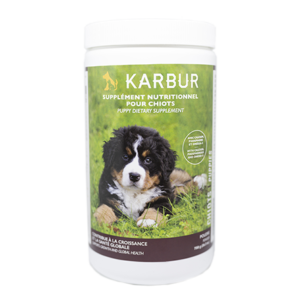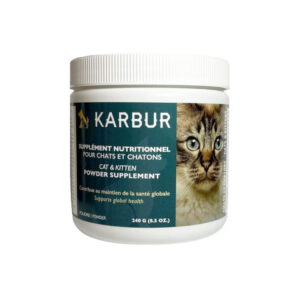| Ingredients |
Benefits for Adult Dogs |
| Dry Yeast |
Source of mannan-oligosaccharides that helps balancing the gut bacterial population and has a direct and indirect effect on the digestive tract health. Provides an increased preventive action against diarrhea problems and prevents from intestinal infectious diseases. Directly enhances the immune defence efficiency and increases the capability to better fight pathogens, by preventing them from attaching to the intestinal lining. |
| Amino Acids: : Arginine, histidine, isoleucine, leucine, lysine, methionine, cystine, phenylalanine, tyrosine, threonine, tryptophan, valine |
These essential amino acids to maintain optimal physiological functions. The combination of amino acids allows the body to appropriately synthesize all the proteins needed for proper functioning. |
| Calcium |
Element critical to bone and teeth strength as well as the nervous system transmission process. However, dosage must be balanced, since calcium overdosage (mainly in large breeds) can be damaging and foster the development of joint dysplasia and bone malformation, while a calcium deficiency may lead to osseous decalcification and secondary nutritional hyperparathyroidism, a thyroid disease caused by a lack of calcium and an excess of phosphorus. |
| Phosphorus |
Important for developing strong bones and maintaining cellular membranes and DNA component. Phosphorus provides energy and is vital for the body in order to absorb calcium found in food. In fact, without phosphorus, calcium alone cannot be absorbed by the intestines. The calcium/phosphorus ratio (Ca/P) must be greater than 1 to ensure the calcium bioavailability. |
| Potassium |
Important for cell functions and energy metabolism and facilitates the acid-base balance. It allows the absorption of vitamins and contributes to the protection of nervous transmission and muscle functionality. |
| Sodium |
Regulates body water content, urine and regularises thirst. It allows vital organs and the nervous system to properly function and contributes to the energy metabolism. |
| Magnesium |
Maintains flexibility and muscular strength, contributes to a strong dentition and skeletal structure and ensures proper nervous system functioning. |
| Iron |
Vital for cellular respiration and blood, it is the main component of hemoglobin that is responsible for carrying oxygen in the body and muscles. |
| Copper |
Stimulates the iron absorption and incorporation in hemoglobin. Stimulates the iron absorption and incorporation in hemoglobin. Active element in several enzymes and plays an antianemic role. Necessary for the collagen synthesis in tendons and the nervous system myelin. Takes part to the melanin synthesis, which is a coat pigment. |
| Manganese |
Essential for the mitochondria functioning (cell respirator). Crucial for bone and cartilage formation and proper neurological functions. Plays a structural role for numerous enzymes. |
| Zinc |
This anti-infective mineral enhances immune defences and wound healing. It is vital to skin and coat health as well as breeding. |
| Iodine |
Essential to growth and development, metabolism regulation and is one of the thyroid hormone components. |
| Selenium |
This antioxidant protects cells and fights the ageing process. Prevents from heart disease and cancer. |
| Vitamin A |
Contributes to vision development, namely night vision, and fosters muscle strength and tissue renewal. Involved in the synthesis of reproductive hormones and proteins, and regulates skin cell growth. Supports skin and coat health, enhances liver functions, and protects against infections. |
| Vitamin D |
Required to favour calcium and phosphorus absorption, essential for normal joint and bone mineralization and formation and crucial for the immune system cell maturation. |
| Vitamin E |
Optimises the use of selenium, protects from oxidation and contributes to the immune system development and red blood cell production. |
| Thiamine (B1) |
Essential for the nervous system to transmit nerve impulses and keeps healthy nerves and muscular tissues. Provides cells with energy. |
| Riboflavin (B2) |
Plays an important role for carbohydrate, fat, and protein metabolism as well as the production of antibodies and red blood cells. Essential for proper functioning of the nervous system, skin & coat health as well as tissue repair. |
| Pantothenic Acid (B5) |
Responsible for fat, protein, and carbohydrate assimilation, essential for ensuring the dog proper cell life and maintaining their overall health. Synthesises iron, prevents anemia, enhances the immune system and maintains skin, coat, and claw health. |
| Niacin (B3) |
Provides energy and takes part to the DNA formation process allowing for proper growth and development. Protects skin through ceramid synthesis in order to avoid dehydration. |
| Pyridoxine (B6) |
Plays an important role in the protein and fat synthesis and contributes to numerous bodily functions, namely: red blood cell formation, blood sugar level regulation and supports the immune system maintenance. |
| Folic Acid (B9) |
Plays an important role in the protein and fat synthesis and contributes to numerous bodily functions, namely: red blood cell formation, blood sugar level regulation and supports the immune system maintenance. |
| Vitamin B12 |
Takes part to numerous metabolic functions, essential to red blood cell formation, nervous system functions and cell genetic material development. |
| Choline |
Involved in the cell membrane manufacturing, fat metabolism, and improves liver detoxication and maximizes digestion. This is one of the acetyl choline components, which is an important nerve impulse regulator. |












